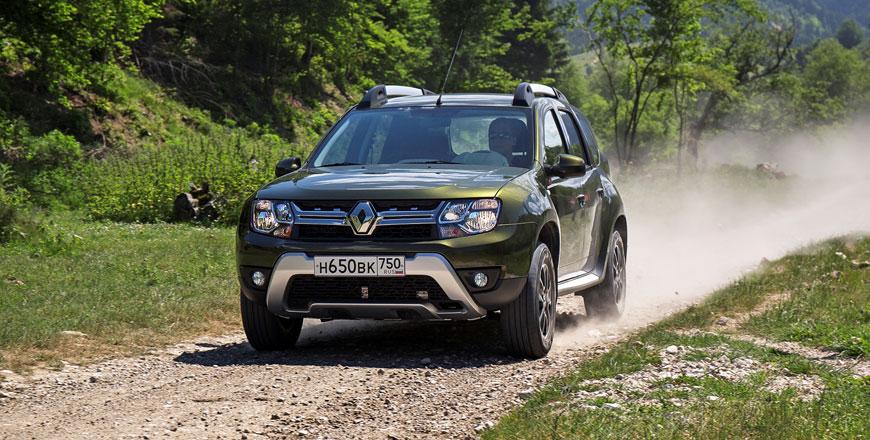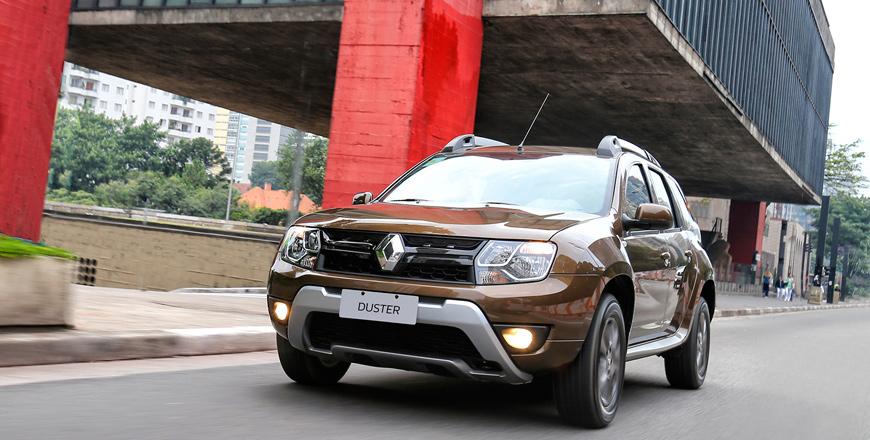You are here
Renault Duster 2.0 4x4: New and improved people’s SUV
By Ghaith Madadha - Jul 30,2018 - Last updated at Jul 30,2018

Photo courtesy of Renault
A modern interpretation of a people’s car for the SUV and crossover milieu, the Renault Duster made the relentlessly popular “high-sided” vehicle an ever more accessible compact option for budget-minded car buyers.
Not the first affordable or capable small SUV, the original Duster, first launched globally in 2010 and in the Middle East by 2012, however bridged the gap between dedicated compact off-roaders like the Suzuki Jimny and Lada Niva, and small sensible saloons pitched at emerging markets, like its own Renault Logan sister.
Dusting off a proven plan
With 2.45-million units sold under both the French brand’s core Renault brand name in the Middle East and under the company’s Romanian Dacia brand elsewhere, the first generation Duster proved popular in both developing and developed markets.
Accounting for 25 per cent of Dacia’s worldwide sales and 20 per cent of Renault’s regional sales during its first incarnation, Renault are now banking on a second hit and following a similar formula for the new generation Duster, made its regional driving debut on demanding sun-soaked southern Jordanian roads and punishing off-road trails earlier this month.
Uncannily similar yet with no body panels shared with its predecessor, the new Duster’s design is distinctly better integrated and emanates more assertively feisty road presence. Retaining its predecessor’s basic mechanicals, underpinnings and platform, the new Duster instead receives tightened aesthetic makeover, and features significant driving and cabin improvements.
However, the secret to the Duster’s success is its “just right” engineering. Small and affordable, it is however big enough for daily family duty and doesn’t look or feel cheap, and is designed throughout with similarly thoughtful rationale.
Rugged makeover
Not straying far from a winning formula the new Duster’s subtle aesthetic makeover includes slimmer part-LED headlights and new light signature, and a narrower grille and greater use of chrome for a broader and more sophisticated look.
Meanwhile, a higher waistline, more rakish A-pillars, better integrated roof rails, more pronounced haunches and surfacing, new alloy wheels, wider rear skid plate and a stylishly fresh square crosshair rear light design lend a sportingly rugged flavour, which is further emphasised with optional fit roof mounted spotlights and a truncated front bull-bar extending from below the skid plate, as driven.
Offered with a choice of two carryover naturally-aspirated four-cylinder petrol engines for Jordan and the Middle East, the entry level Duster receives a 1.6-litre engine producing 113BHP and driving the front wheels through a Continuously Variable Transmission. Meanwhile the driven range-topping Duster 4x4 version gets a 2-litre engine driving all four wheels through a 4-speed automatic gearbox.
Developing 133BHP at 5500rpm and 143lb/ft torque at 3750rpm, the Duster 4x4 makes good progress, with 0-100km/h acceleration in 11.5-seconds and a 178km/h top speed, while returning modest 8.5l/100km combined cycle fuel efficiency.
Comfort and agility
Adequately powered for its segment and progressive in delivery, the Duster 2-litre 4x4 however needed to be revved hard on steep inclines, where also first gear needed to be occasionally deployed. Gearshifts are smooth but could be slightly snappier.
A fine model, the Duster 2.0 could however do with a more powerful model as the range-topper. With its chassis seeming well able to accommodate somewhere between 150-200HP, a more powerful range-topping Duster would be a welcome addition, as would a fifth gear to better exploit available power, or an optional manual gearbox option, as available elsewhere.
Talented through twisting roads, reassuringly stable at speed and comfortable over Jordanian roads’ lumps and bumps, the new Duster’s suspension set-up seems to be more refined, settled and eager than before. Tidy tucking into a corner the Duster drives not too unlike a family hatchback, and seemed agile and eager, for an SUV, when turning in early and in front-drive mode.
It features a new electric-assisted steering system that is quick, accurate and 35 per cent lighter than the outgoing model. Settled on rebound and fluent over road imperfection surfaces, the Duster delivers good balance and grip.
Off-road ability
Isolating most noise and vibration bar the sharpest cracks, the Duster’s 215/60R17 tyres also proved comfortable on dirt roads. Driven in auto 4WD mode, the Duster can allocate power rearwards to maintain traction, while lockable 50:50 torque distribution provides more confident low-speed off-road driving. However, front-drive mode proved nimble on road and perfectly capable throughout moderately demanding rocky, loose, narrow and winding off-road routes, where 210mm ground clearance and good 21° approach, 30° break-over and 33° departure angles were particularly useful and allowed for more off-road ability than most drivers would ever need.
Significantly improved inside, the new Duster features better aesthetics, ergonomics and textures. Its longer, better cushioned and bolstered seats with height adjustability and lumbar support provide a comfortable driving position. Spacious inside for all passengers, the Duster accommodates a minimum of 467-litres cargo volume, which extends to 1623-litres with rear seats folded down.
Meanwhile, cabin ambiance is airy and visibility good. Better equipped than its predecessor, the new model comes with well-chosen standard and optional features include hill descent control, blind-spot warning, parking sensors, multi-view monitor, auto air conditioning, 7-inch infotainment touch-screen, keyless entry and more.
TECHNICAL SPECIFICATIONS
Engine: 2-litre, transverse 4-cylinders
Valve-train: 12-valve, DOHC
Gearbox: 4-speed automatic, four-wheel-drive
Power, BHP (PS) [kW]: 132.7 (135) [99] @5500rpm
Specific power: 66.4BHP/litre
Torque, lb/ft (Nm): 143.8 (195) @3750rpm
Specific torque: 97.6Nm/litre
0-100km/h: 11.5-seconds
Top speed: 178km/h
Fuel consumption, extra-urban / urban / combined: 6.9-/11.3-/8.5-litres/100km
CO2 emissions, combined: 197g/km
Fuel capacity: 50-litres
Length: 4341mm
Width: 1804mm
Height: 1693mm
Wheelbase: 2674mm
Overhang: F/R: 841/826mm
Minimum ground clearance: 210mm
Approach / break-over / departure angles: 21° / 30° /33°
Wading depth: 350mm
Cargo volume: min/max: 467-/1623-litres
Headroom: F/R: 900/892mm
Cabin width: F/R: 1403/1416mm
Kerb weight: approximately 1200-1300kg (est.)
Suspension: F/R: MacPherson struts, anti-roll bar / multi-link
Steering: Electric-assisted rack and pinion
Turning circle: 10.15-meters
Brakes: F/R: Discs / drums
Tyres: 215/60R17
Related Articles
Hardly the first affordable and compact yet capable SUV, the Renault Duster nevertheless proved hugely popular in world markets, since it fi
One of the most affordable modern SUVs, the Renault Duster offers plenty of practicality and functional off-road ability even in its most ba
An affordable and rugged SUV for a broad swath of car buyers, the Renault Duster is the car of the moment during chaste economic times when

















